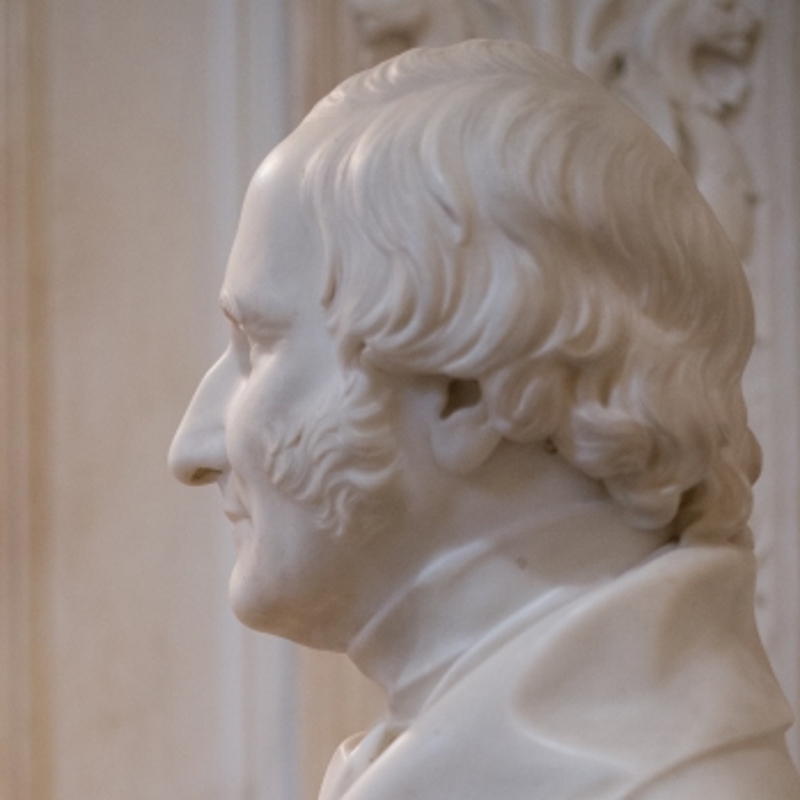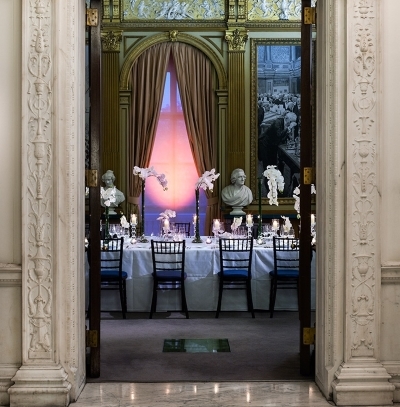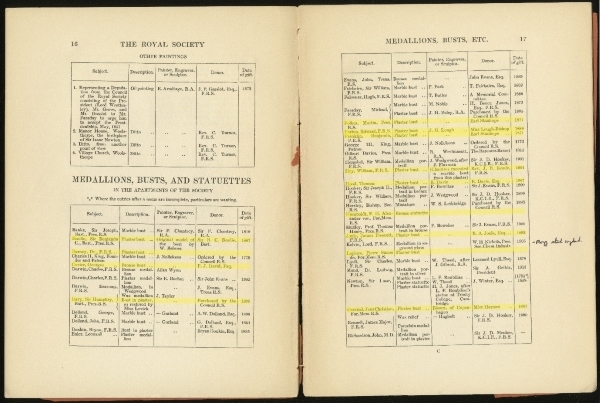The Royal Society Library is contributing to a new cataloguing project which brings together sculptures in public collections across the UK.

You’ve probably heard of Art UK and their project entitled ‘Your Paintings’ (in association with the BBC), which saw over 200,000 artworks from 3,200 collections included on a single online platform, transforming the way people access art.
The Royal Society participated in the Art UK project, and has now been asked to contribute to an ambitious new extension which will bring together sculptures in public collections across the UK on a similar platform. Our mission: to re-catalogue and re-photograph the portrait busts in the Society’s collection.

Wolfson Room 1
The Society has just over 50 sculptures around the building here at Carlton House Terrace, most of which are marble portrait busts. Since these objects have not yet been included in the Society’s own Picture Library, I’m currently in the process of gathering information for catalogue entries which can be used for both databases. One key piece of data is the provenance, which explains how the artwork came to be in the Society’s collection.
In searching the old published portrait catalogues, I’ve discovered a number of missing sculptures! Highlighted here are 15 of the 16 listed in the 1912 Catalogue of pictures which are nowhere to be seen today. Most are plaster busts, which could be copies of original sculptures, but also among the missing is a bronze bust of Georges Cuvier and a bronze statuette of Alexander von Humboldt, which makes their disappearance more puzzling.

Catalogue of pictures … in the possession of the Royal Society (1912), pp.16-17
The 1940 fourth edition of the Record of the Royal Society has a listing based upon that in the 1912 picture catalogue, but expanded to include acquisitions from the intervening years. This helps narrow the date range for the disappearance of our ‘missing 16’ to between 1940 and 1980, when the last catalogue of portraits was published. The supplement to the Record published in 1989 offers a plausible possibility, mentioning that the Society’s valuable collections, including ‘other treasures’, were removed during the Second World War.
We know that the library and archives went to the National Library of Wales in Aberystwyth in 1939, along with librarian H W Robinson. I’ve tracked down an insurance policy for goods in transit dated 14 September 1939, which indicates the insurance of ‘paintings, print and the like whilst in transit from Burlington House W1 to Trelech, Nr. Monmouth, Wales.’ This use of additional storage in Wales is supported by the correspondence of A V Hill, Secretary to the Society from 1935-45, where it is mentioned that the ‘Library is largely disappeared’. The Charter Book was kept in the strong room of a bank in Monmouthshire, and Newton’s watch and the medals were kept in the National Provincial Bank at Hay, Breconshire.
I’ve yet to establish whether any documents explicitly indicate the transfer of the sculptures. If they did stay onsite at Burlington House, it’s possible that they were damaged in the war; alternatively, small works may have been stolen, or they might have been subject to unrecorded loans. Another significant event during this period is the move from Burlington House to Carlton House Terrace in 1967, and I’m now searching for an elusive inventory of artworks from this relocation.
I haven’t been able to get to the bottom of this mystery, but one aim of the project is to facilitate research on artworks and promote collaboration between organisations. It will be interesting to see if any of our missing busts resurface elsewhere, as happened when a terracotta Isaac Newton sculpture by Louis-François Roubiliac popped up in the Royal Museums Collection. The bust had been bequeathed to the Society by John Belchier FRS, and the Council Minutes of 18 August 1785 record that Belchier wanted it to be put on public view at the Royal Observatory in Greenwich, the Royal Society already being in possession of a Roubiliac marble bust of Newton.
Interestingly, the terracotta version fell into obscurity after it was mistaken for a lower value plaster one, having been painted white after repair work in the 19th century, and it wasn’t until the 1960s that it was properly identified and restored to its former glory. Who knows what other Royal Society treasures might be hidden in plain sight under a coat of white emulsion?







